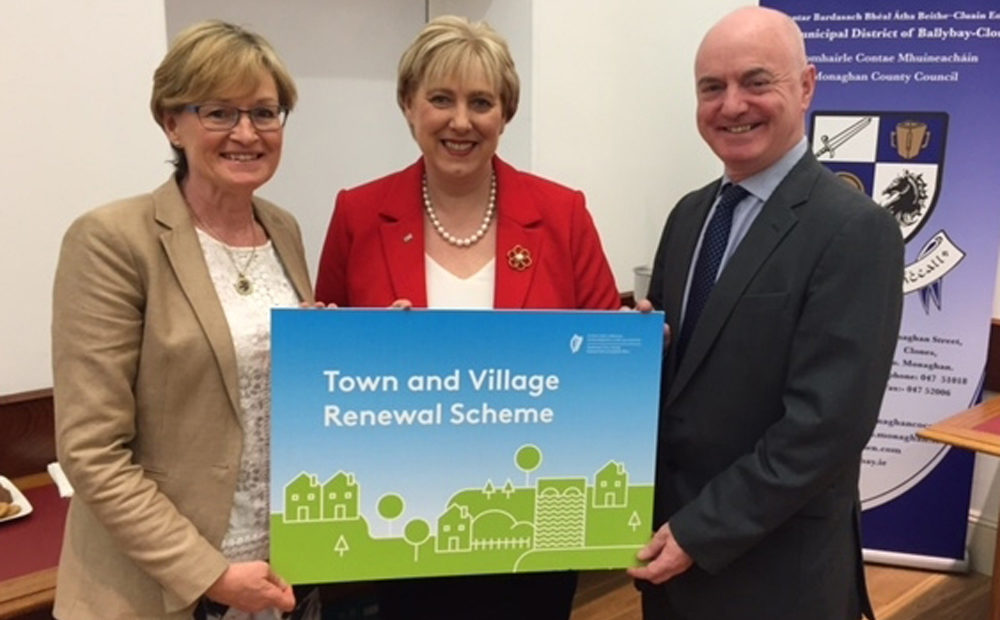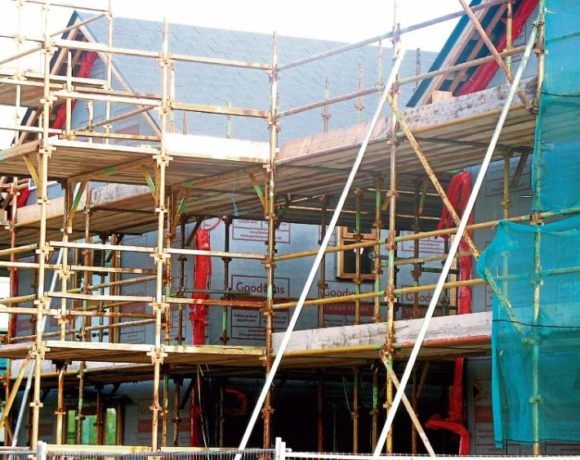Council Journal took the time to talk to Mary Byrne of the Town & Village Renewal Scheme about why it’s a successful example of department and local authority cooperation and why it’s so important to work to ensure the growth and viability of rural communities.
“I’m based in the Department’s offices in Ballina and I joined in November 2016 to work on the scheme, which was launched in August 2016. The scheme, essentially, is administered by the Department of Arts, Culture and the Gaeltacht and the Department of Rural and Community Development to provide revitalisation and regeneration for towns and villages throughout the country,” she explained.
The value of the fund is significant. In 2018, €15 million was assigned to fund over 200 projects. Since the fund’s inception in August 2016, €31.6 million has been assigned to fund over 450 projects.
One of the great strengths of the Scheme is that it promotes initiatives coming from the towns and villages themselves, and it’s very much led by them,” Mary adds.
“We welcome local interest groups and community groups coming together to make proposals as this, generally speaking, leads to a better developed proposal, which can help return vibrancy or restore a vital element to some areas which have been long neglected.”
Although successful grants are issued by the Department, the monies are administered to the Local Authorities, who are responsible for working with local communities to successfully develop and complete the successful projects.
“The scheme is administered through the Local Authorities, who are required to work closely with local businesses and local communities to develop and implement ideas that can make a real and sustainable impact in revitalising rural towns and villages across the country.
Successful town and village revival is most likely to be achieved where there is close partnership between the community, public and private sectors,” says Minister of State for Regional Economic Development, Michael Ring TD.
“An example of this would be The Food Hub in Drumshanbo, County Leitirm, which has eight local food and drink producers working together to successfully develop their businesses and create something of real value for the local community.
One of the more well known brands produced there would be Gunpowder Gin. We have worked with the Hub, which is community owned, to develop the entrance and exit facilities to the Hub and this has also assisted in the expansion of the Hub.
The scheme is not designed to assist the expansion of individual businesses though, and each grant must have a clear benefit to the community at the heart of the proposal.
Another local example in Drumshanbo would the the Acres Lake boardwalk, which is a unique and inventive tourist attraction for the area,” explains Mary.
The Town and Village Renewal Scheme is an initiative under the Government’s Action Plan for Rural Development. Local Authorities are required to advertise for expressions of interest from towns/villages in their area before the end of April each year and from there they will select 12 proposals for development, which are then submitted to the Department of Rural and Community Affairs.
Speaking at the launch of last year’s round of funding under the scheme, Minister for Arts,Culture and the Gaeltacht, Heather Humphreys TD said that the scheme is part of a “package of measures at national an local level support the rejuvenation of towns and villages across Ireland.
It includes initiatives in areas such as heritage, tourism, arts and culture, the re-use of vacant premises, energy efficiency and business supports.
Sustainable Impact
There is a very broad remit in terms of the sorts of schemes that can apply to the scheme. They must have a purpose relating to the improvement of civic and economic infrastructure (lighting, footpaths expansion of civic amenities etc, leisure developments.) We have also funded digital hubs or local enterprise centres to encourage start up business etc,” adds Mary.
Projects that stimulate economic activity between a town/village and its neighbouring town-lands will be particularly welcome, as will projects which demonstrate leveraging of, or linkages with, other schemes operated by Government Departments or Agencies. Up to 80% of the total cost of a project under the scheme will be provided for any individual project.
The minimum grant which is available is €20,000 and the maximum is €100,000. A higher maximum of €200,000 will be considered for a limited number of projects where a strong case can be made demonstrating exceptionally strong economic benefit to a town and/or its outlying areas. Local Authorities may seek further optional funding of up to €20,000 in total for art works to enhance public spaces, as part of one or more project proposals submitted in respect of their area.
It will be a matter for each Local Authority to commission and choose the works to be funded, ideally with an emphasis on participation by local artists.“Obviously not all can be successful,but we do our best to assist those that are well prepared and presented and will demonstrate real value for the community. I really can’t over emphasise how important it is for companies to really put the time in to the quality of their presentations,” adds Mary Byrne.
Two categories of Town/Villages are eligible for support under the scheme:Category 1: Towns/villages with a population of less than 5,000 people.Category 2: Towns with a population of 5,000-10,000 people.
At least of 60% of the funding available will be awarded to Category 1 towns and villages. Successful proposals will demonstrate close collaboration between communities and business interests in the design and delivery of proposed projects and must have the support of the Local Authority. “The towns and villages that submit proposals must be separate towns and villages and not part of some larger town or part of a larger urban development,” she explained.
Although the funds administered by the town and village scheme are spent by the relevant Local Authorities, procurement rules must be followed and completed projects are then inspected by the Town and Village scheme to ensure compliance.
“I’m glad to to say that so far we have had no issues in relation to how the scheme is carried out. We’ve developed a very good working relationship with Councils in terms of developing expressions of interest and proposals and we are enthused by the quality of the proposals we are receiving,” says Mary.
She said it bodes well for the future development of the scheme. “We look forward to seeing it provide much needed regeneration and revitalisation to our towns and villages.
Although I’ve previously lived and worked in Dublin city centre, I’ve developed a great affinity to rural areas, that’s where I live now, with our offices based in nearby Ballina. Most of us working here would have a rural background, but not all, so in my opinion you don’t need to be originally from the country to feel an attachment to it and to see the massive benefit that can come from sustaining rural communities, towns and villages.”
Main Image: From left: Mairéad McGuinness, MEP for Mayo and Vice-President of the European Parliament; Heather Humphreys, TD, Minister for Arts, Heritage, Regional, Rural and Gaeltacht Affairs and Peter Hynes, chief executive, Mayo County Council and President of City and County Managers Association.













